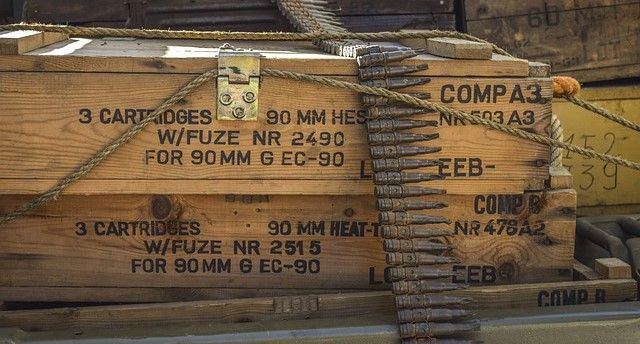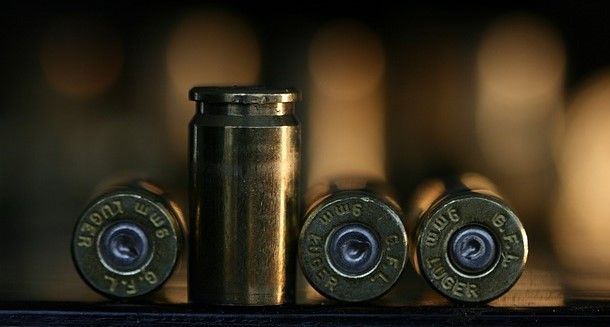More than thirty years after the end of the Cold War, Europe and the United States has a greatly reduced military production capability. Meanwhile, Ukraine is using thousands of bullets, mortar rounds, grenades, anti-tank rockets, and artillery shells.
“They’re going through it at phenomenal rates,” said Mark Cancian, asenior adviser at the Center for Strategic and International Studies. “The U.S. bins are very low. We’re going to increase production substantially, but it’ll still be way below what the Ukrainians are using.”

While recent news of battle tanks, such as the German Leopard II, US M1 Abrams, and British Challenger 2, being sent will help tip the war in Ukraine’s favour (Russia’s tanks are nowhere near as good), the supply of ammunition will be a key point in who wins the war.
As Benjamin Jensen from the Center for Strategic and International Studies, notes, “There’s no such thing as infinite resources. Heaven forbid this goes on another year, two years. At some point the fighting will exhaust even the entirety of the Western world’s support for Ukraine.”
The war has already sparked the EU into action over their own defence spending and supplies. “Simply put, there just aren’t enough bullets, weapons and hi-tech systems in Europe to match the EU’s demands and looming dangers ahead,” notes a Politico report. “And the demand is high — since the war broke out in February, EU countries have pledged to spend more than €230 billion to modernize their arsenals.”

“Spending dramatically increased after the Russian invasion in February,” notes Lucie Béraud-Sudreau, from the Stockholm International Peace Research Institute. However, with the sudden eruption of fighting now on a scale not seen since the Second World War, many countries are realising how ill-prepared their armies are. “Europe is still catching up, replenishing and renewing existing stocks of weaponry,” she adds.
It certainly doesn’t seem to be an issue of money. As a recent Politico report notes, “Billions in new defense spending is here, but European firms don’t have the supply, coordination or speed to match the war-time demand.”
This is a view supported by Chris Dougherty, a senior fellow at the Center for a New American Security when he says, “It’s probably more about developing an ability to scale and ramp production, when and where it’s needed.”
Most Western countries can simply take on more debt in times of crisis. In this way they can easily fund support for Ukraine in their fight for independence, but can they make enough guns and ammunition in the time required?
Worse than mere production capacity, many Western governments are now realizing the fragility and lack of autonomy in their defence industry supply chains.
“We can’t rely on China to build components for our weapons, which is to some extent, potentially what we have done — whether knowingly or not,” said Elbridge Colby, co-founder and principal of The Marathon Initiative.

The situation is not unique to Europe as it is also a cause for concern across the Atlantic.
Part of the issue there, is the way that the American government has been funding its defence industry in a series of continuations, rather than through long-term strategic investment.
“Federal policy and investment in our national defense can be summed up in two words: unpredictable and inconsistent,” explained Aerospace Industries Association president Eric Fanning told the US House Armed Services Committee. Adding that the defence industrial base has been run for many years based on peacetime needs and so “excess capacity for surging is not … built into the system.”
It is a point supported by David Norquist, head of the National Defense Industrial Association, who highlighted how, “in 13 of the last 14 years, we’ve had long continuing resolutions that specifically prevent new starts or increased production rates. These trends are not consistent with creating the defense industrial base required for great power competition.”
This fact is laid bare in the numbers. For example:
· 17,000 companies have stopped working in the US defence sector in the last 5 years.
· 40% decline in small businesses operating in the defence industrial base over the last decade.
· Defence funding decreased from 5.8% to 3.2% of GDP between 1985 to 2021.
· Projected US defence funding of 2.7% by 2032.
“The condition of the industry today is not the result of Russia’s invasion of Ukraine,” notes Fanning, “but it’s successive decisions made over many years.”

Yet maybe such analysis should wait until the war is over, as for now all minds in the defence sector are focused on getting the military equipment that is needed to the frontline.
“As a company, we are investing hundreds of millions now in making sure that we can meet the demand,” said Micael Johansson, CEO of the Swedish military hardware manufacturer Saab, whose NLAWs (shoulder-mounted rocket launchers) have been a stalwart in Ukraine’s survival.
This will be a major challenge, as for a large part the European defence industry has been based on streamlining and small numbers. It is a model which works well most of the time, but not when it becomes embroiled in a proxy war with Russia.
“The problem of the European defense industry is that it is used to producing complex weapons in very small series over a long period of time, which suits the peacetime situation,” said David Chour, chief financial officer of the Czech Republic’s biggest weapons producer, Czechoslovak Group (CSG). “But the security environment has changed, billions in investments are needed.”
The funding and production capacity shortfall is even bringing into question Europe’s ability to protect itself – so-called defensive strategic autonomy.

“We hear from U.S. colleagues, actually advice,” said Jiří Šedivý, head of the European Defense Agency (EDA), an EU agency which helps unite member states’ defence initiatives. “‘Invest in your own strategic enablers, because there might come a time, and it could be pretty soon, when actually, we, the U.S., might be engaged fully elsewhere in Asia-Pacific and we will be simply unable to support you.’”
For that reason, many of Europe’s leaders are seeing that the defence of Ukraine is not about their independence, but about Europe’s ability to protect itself. Because if its defence industry cannot supply sufficient arms and ammo to defend Kherson and Bakhmut, then it may not be able to defend Warsaw and Berlin.
To read more about this topic, read: What Will Decide when Russia’s War in Ukraine Ends?
Photo credit: Michael Drummond from Pixabay, Tung256, Military Material, Michael Gaida, Steven, & Brent Hondow